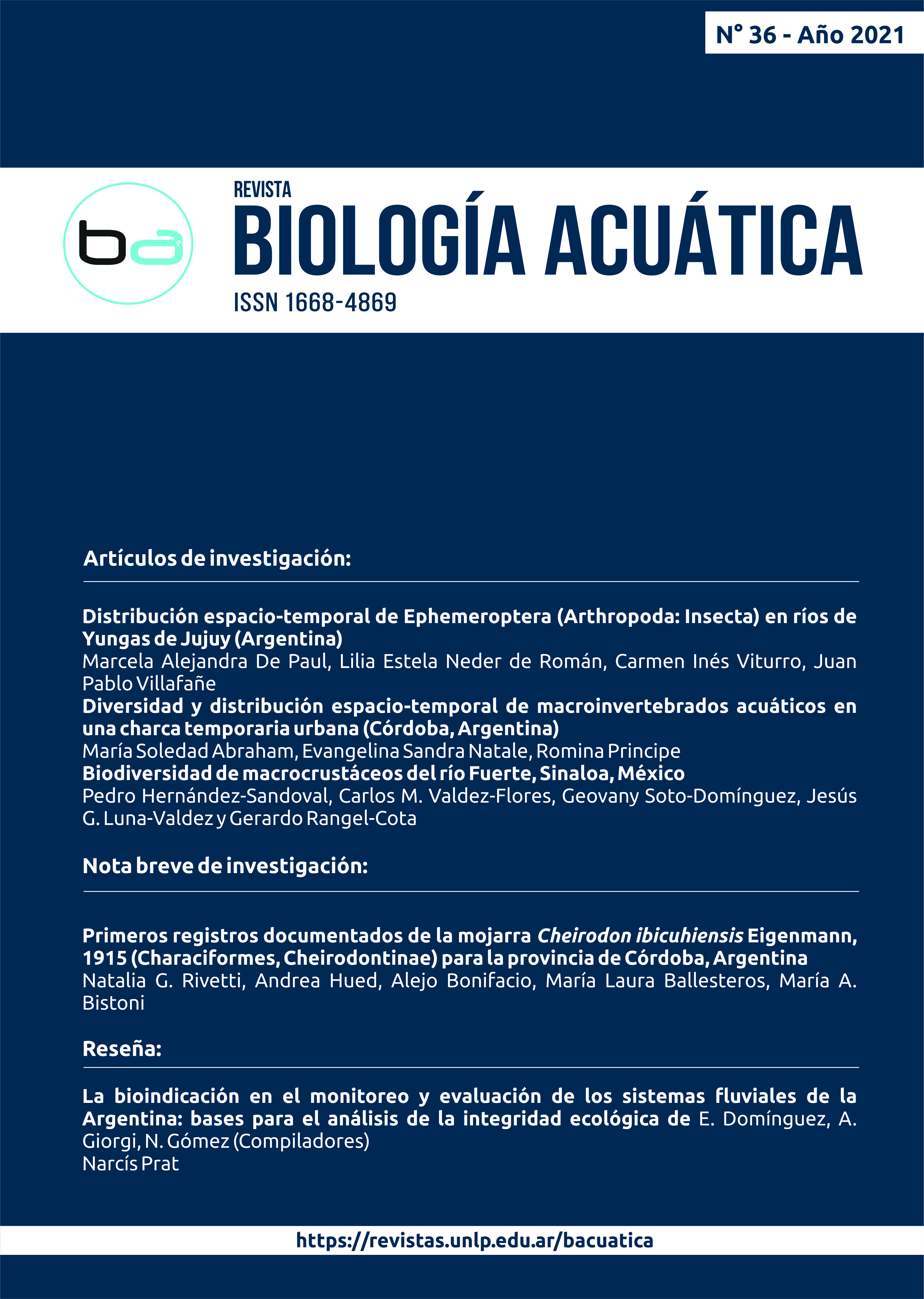Biodiversity of macrocrustaceans of river Fuerte, Sinaloa, Mexico
DOI:
https://doi.org/10.24215/16684869e021Keywords:
ecological index, taxa, palemonidos, communityAbstract
The Fuerte river forms large ecosystems in its channel that serve as the habitats for freshwater macrocrustaceans with ecological and economical importance in the Northern area of the state of Sinaloa, Mexico. The objective of this investigation is to generate information about the biodiversity and the spatial patterns of the crustacean community due to the absence of published data of this fauna. Therefore, five sampling stations were established (El Fuerte, San Blas, San Miguel, San José and Las Grullas) along the river channel at different altitudes (m a.s.l.) and distances, beginning at El Fuerte (EI) municipality until its mouth at Las Grullas (EV) in the Ahome municipality. The specific richness was 12 (S=12). Palaemonids and cambarids were the best represented taxa. The diversity (Shannon-Wiener index) was higher (H’=0.92) than the recorded in other Mexican rivers. The Bray Curtis ordination (nMDS) analysis showed that the community was formed by three well defined groups. Macrobrachium tenellum and Potimirin glabra were the most abundant species. Las Grullas sector showed the minor number of individuals, with the presence of species such as Litopenaeus vannamei and Callinectes arcuatus. Furthermore, an exotic species (Procambarus clarkii) was found as well as a species (P. glabra) previously not reported for the region.





















